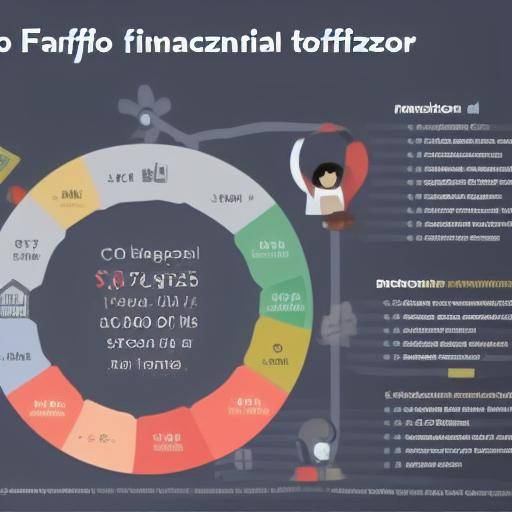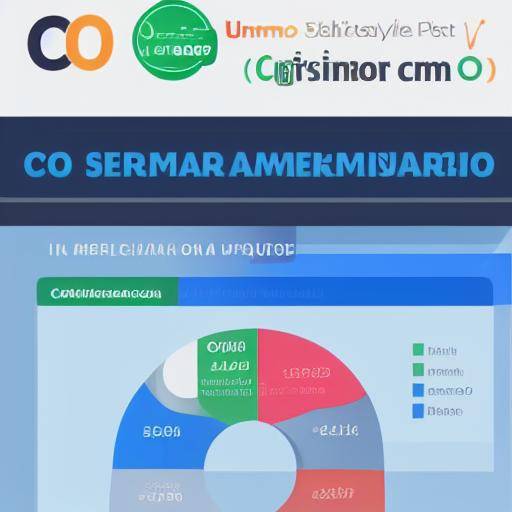
At present, the importance of good financial planning has gained relevance, especially in a constantly changing world. It is essential that people learn to manage their economic resources effectively to ensure their long-term stability and well-being. One of the most recognized methods of financial planning is the 50/30/20 Rule, which provides a clear and simple framework for managing income and fostering savings consistently.
This article will focus on exploring in detail the 50/30/20 Rule, its practical applications, benefits, challenges, as well as its relationship with key concepts such as budget and financial planning. In addition, practical advice, comparative analysis, case studies, future forecasts and expert views will be provided. In the end, frequent questions will be included to provide a more comprehensive understanding of these issues vital to economic stability.
History and Background
The 50/30/20 Rule has been a focus on personal financial management for several decades. It emerged as a simple and effective guide to divide income into three categories: needs, desires and savings. Originally popularized by the personal finance expert Elizabeth Warren, this rule has been adopted by numerous experts and has become a fundamental pillar for individual financial balance.
This model has evolved over time, adapting to economic and social changes. Since its inception, the rule has been supported by its practical approach and ability to provide a clear structure when making financial decisions.
Analysis in Deep
Benefits of the Rule of 50/30/20
The 50/30/20 Rule offers several significant benefits. First, it provides a clear and simple guide to income allocation, facilitating financial management and planning. In addition, it promotes systematic savings, which eventually leads to greater financial stability and property growth.
Challenges in Implementing the 50/30/20 Rule
Despite its benefits, the implementation of the 50/30/20 Rule can present challenges. On many occasions, personal circumstances may make it difficult to strictly follow this rule, which requires adaptability and flexibility to adjust it to individual needs.
Current trends in the implementation of the 50/30/20 Rule
The 50/30/20 Rule has undergone changes in its implementation as the global financial landscape advances. New trends, such as the inclusion of sustainable investments within the savings category, have emerged as part of the evolution of this rule in the modern era.
Comprehensive review
The effective implementation of the 50/30/20 Rule is based on understanding its role within a broader budget and overall financial planning. In considering its long-term benefits, you can see how this rule is harmoniously integrated with other financial strategies to achieve a complete optimization of economic resources.
In addition, exploring best practices in the implementation of this rule will provide a clear vision of how to maximize its effectiveness, adapting it adequately to individual needs and goals.
Comparative analysis
Compared to the broader concept of budget and financial planning, the 50/30/20 Rule provides a more detailed and specific structure for income distribution. While sharing similarities with a conventional budget, its approach to systematic savings distinguishes it as a unique tool within the personal financial landscape.
Practical Tips and Accessible Advice
The successful implementation of the 50/30/20 Rule largely depends on understanding its fundamental principles and how they apply to personal circumstances. Here are some practical tips for optimizing the use of this rule:
- Automate Savings: Setting automatic payments to a savings account ensures that 20% of the income is consistently paid.
- Regular review of expenses: Performing a regular cost assessment can reveal areas where adjustments can be made to maintain the integrity of the rule.
- Use Technological Tools: There are numerous digital applications and platforms designed to manage budgets and savings, facilitating the tracking and compliance of the rule.
- Find Investment Opportunities: Considering investment options that can generate yields could contribute to the growth of the savings fund.
Perceptions of Industry and Expert Reviews
The views of experts on personal finance highlight the importance of the 50/30/20 Rule as a reliable and effective method for achieving long-term financial stability. Financial planning experts also point to their usefulness as an initial guide for those seeking to establish a structured and sustainable savings plan.
Current trends in the financial industry reflect a greater focus on financial education and long-term planning. The 50/30/20 Rule is perfectly aligned with these objectives by providing a clear framework for income management and fostering responsible financial habits.
Case Studies and Practical Applications
Case studies will be presented to illustrate the successful implementation of the 50/30/20 Rule in various financial situations. These cases will provide tangible examples of how individuals and families have managed to use this rule to improve their economic well-being.
Future Trends and Predictions
The future of personal financial planning is aimed at further integration of innovative technologies that facilitate economic resource management. The 50/30/20 Rule is expected to remain a key tool, but it is likely to adapt to reflect changes in global financial dynamics.
Conclusion and FAQs
Effective management of personal finances is crucial to achieving long-term economic stability and security. The 50/30/20 Rule provides a clear and simple framework for achieving this objective, highlighting the importance of systematic savings and responsible management of income.
FAQs
1. Why is it important to follow the 50/30/20 Rule?
The 50/30/20 Rule provides a clear structure for income management, prioritizing needs, desires and savings, which in turn fosters healthy financial habits and long-term stability.
2. How can I adapt the 50/30/20 Rule to my personal circumstances?
Adaptability is key. The 50/30/20 Rule can be adjusted to reflect individual needs after a careful assessment of personal circumstances.
3. Can the 50/30/20 Rule apply to variable income?
Yes, the rule can adapt to accommodate variable income by prioritizing the allocation of percentages based on current income.
4. How can I control the temptation to spend more on the "desires" category?
Establishing clear limits and regularly reviewing expenses can help maintain a healthy balance between the categories of needs, desires and savings.
5. What role does the 50/30/20 Rule play in retirement planning?
The 50/30/20 Rule can be an excellent basis for starting a solid retirement fund by prioritizing long-term savings.
6. Are there regional or cultural variations in the application of this rule?
As any financial approach, it is important to consider the influence of regional or cultural variations in the manner in which the 50/30/20 Rule applies, adapting it to local needs and expectations.
In conclusion, the 50/30/20 Rule represents a proven and reliable method of effectively managing income, fostering savings and ensuring a stronger financial future. By understanding their principles and adapting it to individual needs, individuals can use this rule as a fundamental tool in their path to economic stability.






















































